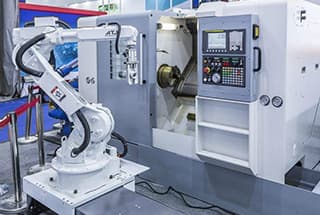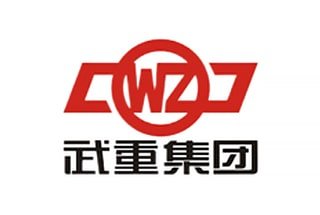
Have you ever wondered how precision holes are created in metal parts or how flat surfaces are made flawless? This article delves into the fascinating world of boring, planing, and grinding machines. It explores their distinct functions, various types, and the precise processes they use to shape, smooth, and refine metal components. By the end, you’ll have a clear understanding of how these machines contribute to high-precision manufacturing.
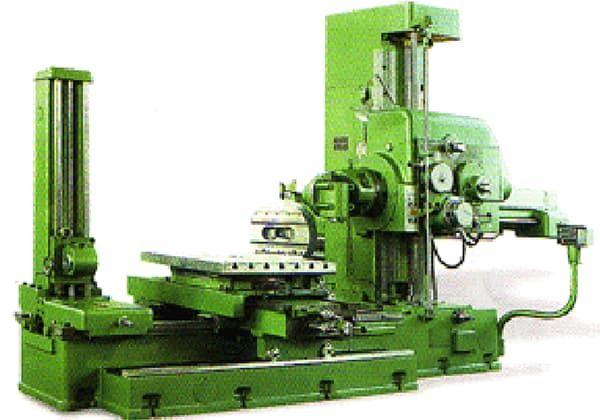
The boring machine is a machine tool used to process holes with larger dimensions and higher precision requirements, especially for processing hole systems with high mutual positional accuracy requirements distributed in different locations of the parts.
It is usually used for further processing of holes that have been cast, forged or drilled.
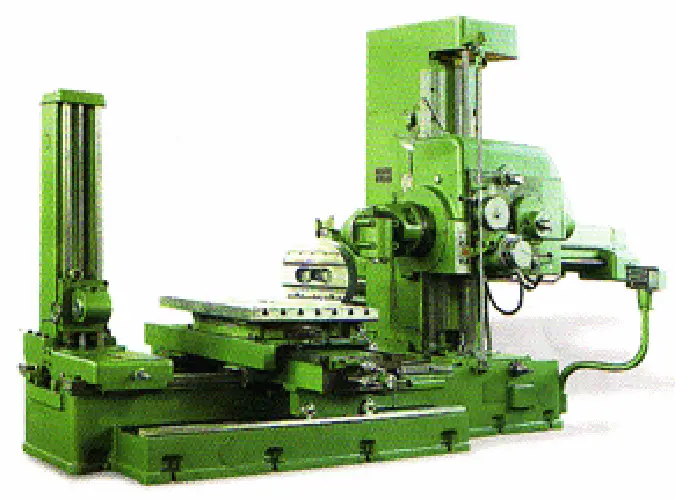
According to their purpose and structure, there are various types of boring machines.
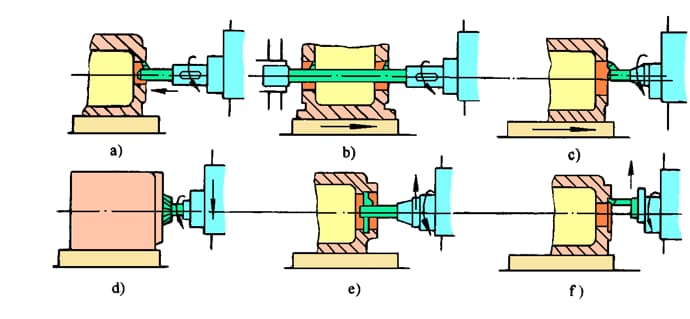
Boring is a process of enlarging the diameter, improving the accuracy, reducing the surface roughness and correcting the position of holes that have been cast, forged or drilled.
The main motion of boring is the rotation of the boring tool, while the feed motion can be axial or radial movement of the spindle, or longitudinal or transverse movement of the worktable.
Boring tools have a simple structure and a wide variety, making them more versatile. However, boring machining (especially single-point boring) has low production efficiency.
Boring machining is suitable for batch production of parts with high positional accuracy requirements.
1. Horizontal Milling and Boring Machine
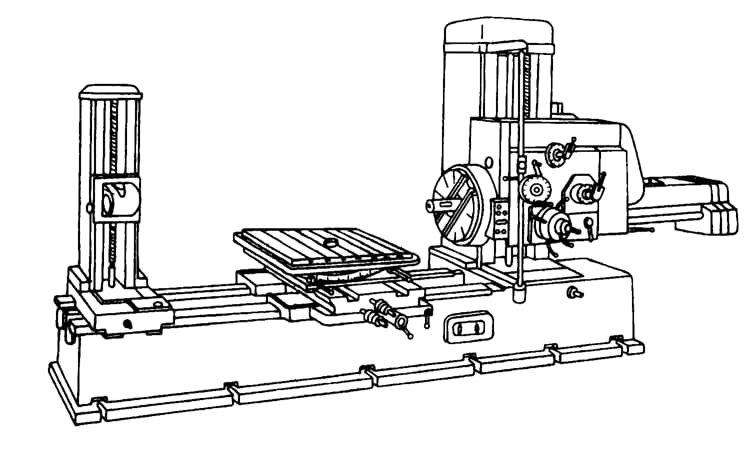
Horizontal milling and boring machine features:
The horizontal arrangement of the spindle makes it suitable for processing holes in single pieces or small batches with conventional precision.
2. Coordinate Boring Machine
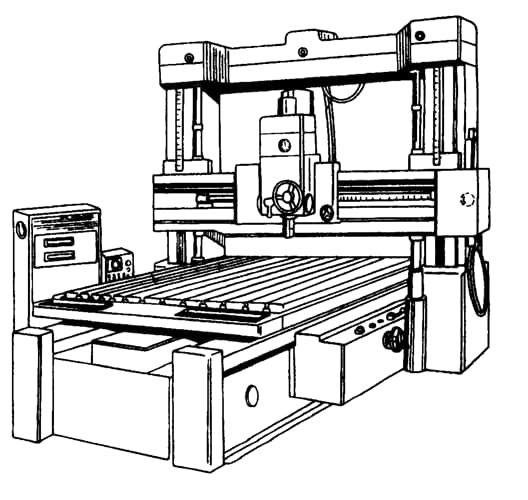
Coordinate Boring Machine features:
Coordinate boring machines are equipped with precise measurement devices for coordinate positions, which ensures accurate relative positioning between the tool and workpiece.
The holes processed by coordinate boring machines can achieve high dimensional and shape accuracy, as well as precise positional accuracy between holes or between holes and a reference surface.
Coordinate boring machines can be used for precision scribing and contouring, as well as for precise measurements of hole distances and straight lines.
They are mainly used for processing precision components, fixtures, molds, gauges and other items that require high precision.
3. Precision Boring Machine (Diamond Boring Machine)
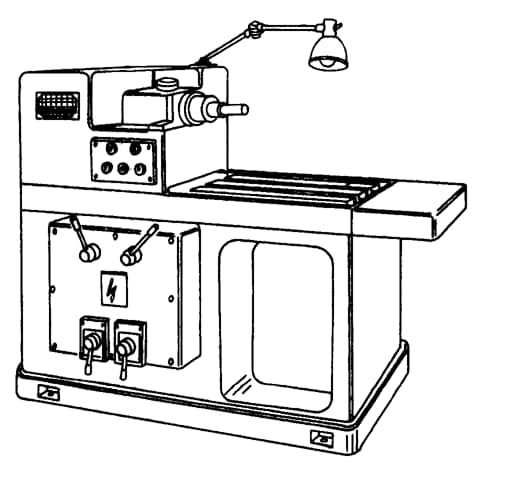
Precision Boring Machine (Diamond Boring Machine) features:
Precision boring machines were previously named after their diamond tools (now made of hard alloys).
The precision boring machine has a high cutting speed and extremely small cutting and feed amounts, which allows for precise and fine boring of holes in the workpiece. This results in extremely high dimensional accuracy and low surface roughness.
They are mainly used for batch processing of precision holes in important parts such as connecting rods, piston, hydraulic pump housings, cylinder liners and other components.
Planer is a machine tool used to process various flat surfaces and slots.
According to the different machining positions, planers can be divided into two types: planer and shaper.

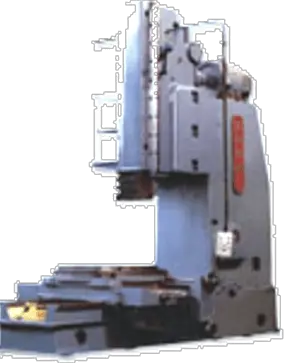
According to their purpose and structure, planers can be divided into several types, including:

Planer tools are simple and have good versatility. They are easy to grind, have short production preparation period and low cost.
Planing machining has both working travel and non-working travel, which results in lower productivity.
During planing cutting, there is an impact that can easily damage the cutting tool. The cutting speed is limited, and the cutting heat is low. Therefore, cooling with cutting fluid is generally not required (except for precision planing).
The main motion of planing machining is the reciprocating linear motion of the planer (bullhead planer) or the worktable (gantry planer), and the feed motion is the intermittent transverse movement of the workpiece driven by the worktable (bullhead planer) or the intermittent transverse movement of the planer driven by the tool holder (gantry planer).
1. Bullhead Planer
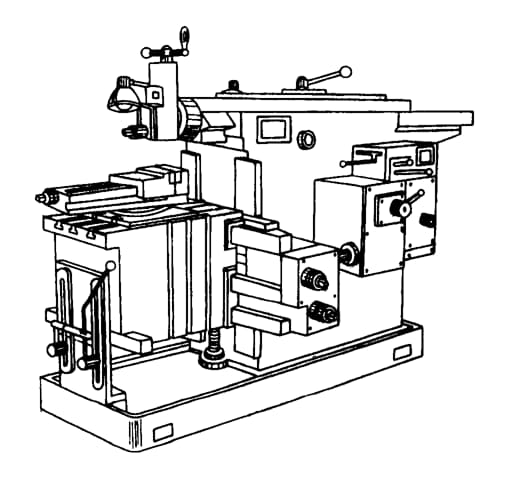
Bullhead Planer Features:
The mechanical bullhead planer has a simple structure, reliable operation and easy adjustment and maintenance.
The hydraulic bullhead planer has greater transmission force, smooth movement and can achieve stepless speed regulation. However, it has a more complex structure and higher cost.
Bullhead planers are mainly used for processing medium and small workpieces, and the length of the workpiece generally does not exceed 1 meter.
Bullhead planers are widely used in manufacturing processes of various large-scale workpieces such as bases, foundations, slide blocks, gearbox covers, and so on.
2. Gantry Planer
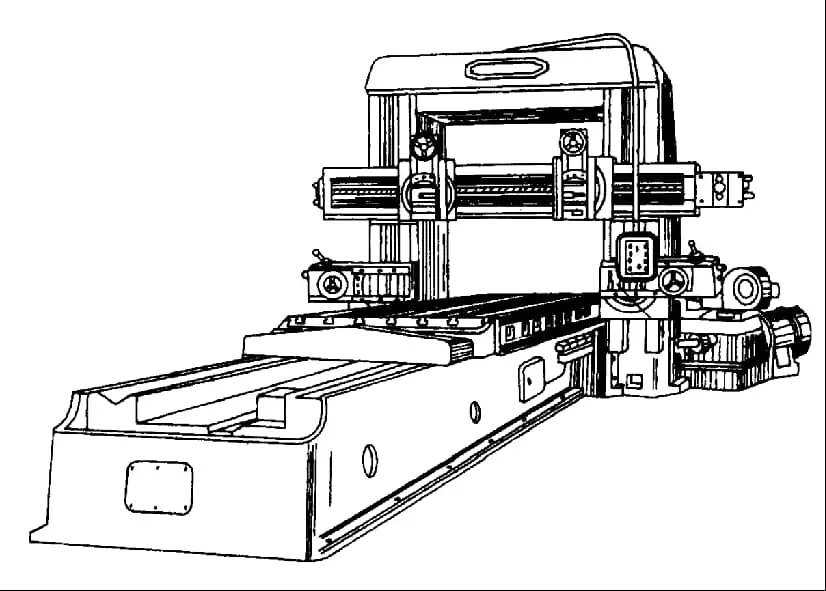
Gantry Planer Features:
The main motion of the gantry planer uses a DC motor, which can achieve a wide range of stepless speed regulation. This makes it easy to control the surface cutting speed and ensures that the worktable runs smoothly.
Gantry planers have four tool holders, and the feed direction and speed are easy to operate, making them suitable for processing flat surfaces and side surfaces of workpieces with different heights.
The main movements of the machine tool, such as feeding, lifting, beam locking and release, rapid traverse of the worktable, feeding, and rapid retreat, can be operated centrally to achieve automatic cycling.
Gantry planers are mainly used for machining large workpieces, and can be used for roughing and finishing operations. They can also complete multiple tasks in one operation, such as planing, milling, and grinding.
3. Cantilever Planer

Cantilever Planer Features:
The working characteristics of a cantilever planer are similar to those of a gantry planer.
It is especially suitable for machining workpieces that have a large width but do not need to be machined across the entire width.
However, the stiffness of the beam of a cantilever planer is lower than that of a gantry planer. As a result, the machining accuracy is limited.
4. Slotting Machine (Vertical Planer)
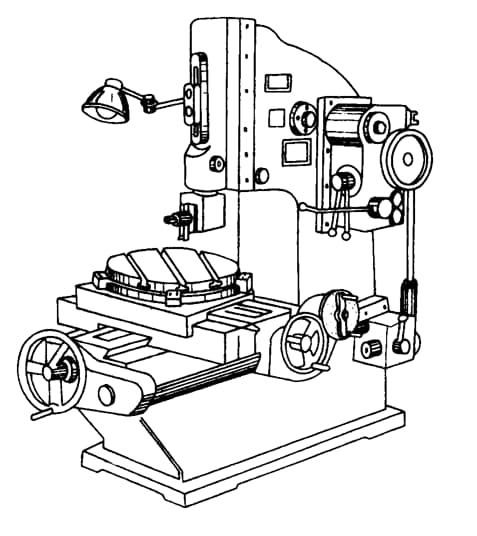
Slotting Machine Features:
The main movement of a slotting machine is the reciprocating motion of the ram and the cutting tool, while the feeding motion is the rotary motion (circumferential feeding) of the circular worktable driven by the workpiece and the longitudinal and transverse movement of the vertical slide.
It is mainly used for machining various keyways, vertical planes, and forming surfaces in single-piece or small batch production.
A machine tool that uses a grinding wheel or other abrasive tool to perform grinding operations on a workpiece is called a “grinding machine”. Grinding machines are mainly used for processing quenched and hardened steel parts. Through grinding, high precision and low roughness surfaces can be obtained. In general, it is the final process of mechanical machining.
According to their different purposes and structures, grinding machines can be divided into the following types:
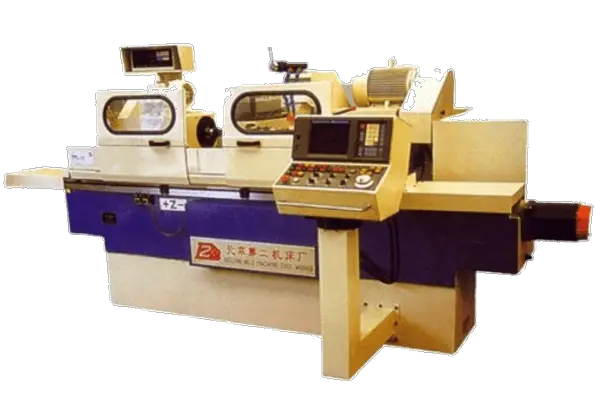
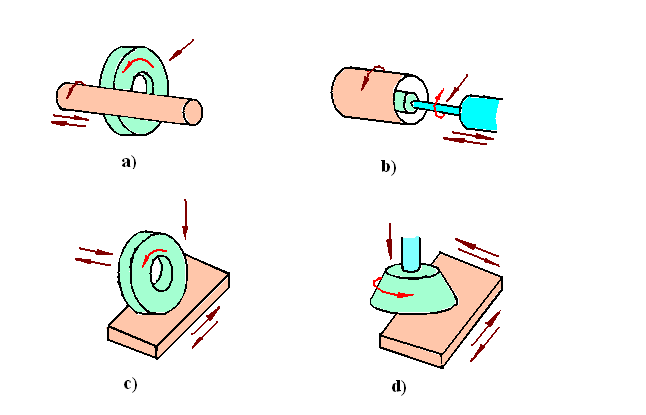
1) Grinding processing is a precision machining method commonly used for quenched steel, hard alloys, etc. It can achieve high accuracy (IT6-5) and low surface roughness (Ra=0.8-0.4 μm) of the workpiece.
2) The high-speed rotation of the grinding wheel relative to the workpiece is the main motion. The circumferential speed of the grinding wheel is generally around 35 m/s.
3) The grinding wheel is a non-metallic cutting tool composed of abrasive materials (such as alumina Al2O3, silicon carbide, boron carbide, etc.) and binders. Due to the high grinding speed and the hardness of the workpiece, a large amount of cutting heat is generated during the grinding process.
Therefore, sufficient cooling and lubrication with cutting fluid are required to improve the surface quality and production efficiency.
1. Universal cylindrical grinding machine
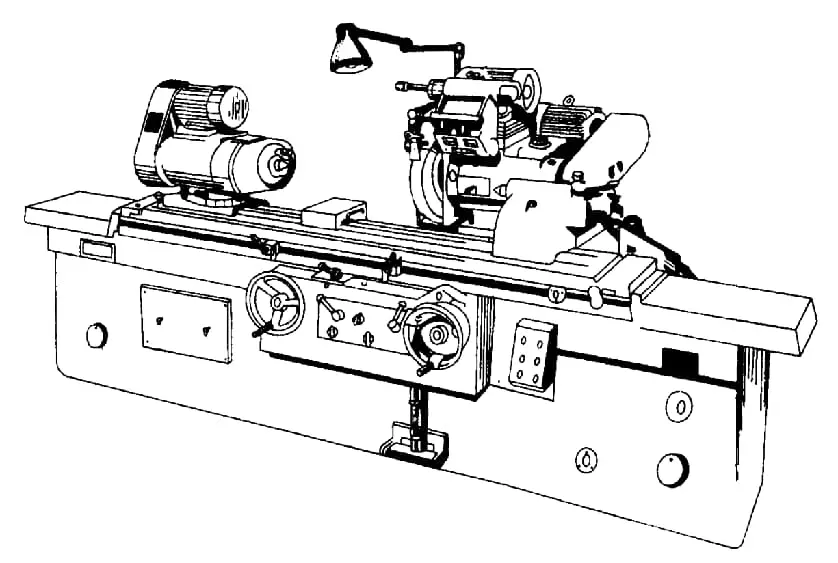
Features of universal cylindrical grinding machine:
1)The rotary motion of the grinding wheel is the main motion of grinding, with three feed motions: the spindle drives the workpiece to rotate for radial feed motion, the table drives the workpiece for reciprocating linear motion for longitudinal feed motion, and the intermittent movement of the grinding wheel along the radius direction towards the workpiece is the transverse feed motion.
Additionally, there are two auxiliary motions: for the convenience of the movement of the grinding wheel and to save idle time, the grinding wheel can make a fixed stroke transverse rapid motion; for loading and unloading the workpiece, the tailstock sleeve can have telescopic motion.
2)The universal cylindrical grinder can not only grind the outer cylindrical surface of cylindrical workpieces, but also can grind the inner bore and conical surface (the table has horizontal rotation function); suitable for precision machining of single or small batch parts.
2. Internal Grinding Machine

Features of the Internal Grinding Machine:
1) The rotational movement of the grinding wheel is the main motion for grinding. There are three feed movements: the rotation of the workpiece driven by the spindle is the circumferential feed motion, the reciprocating linear motion of the headstock driven by the worktable is the longitudinal feed motion, and the movement of the grinding wheel frame along the saddle is the transverse feed motion.
2) Due to the limitation of the diameter of the workpiece being ground, the diameter of the grinding wheel is generally small, and to achieve the required cutting speed for precision machining, the rotational speed of the grinding wheel is usually above 10,000 r/min.
It is suitable for precision internal grinding of parts in single-piece or small batch production.
3. Flat Grinding Machine for Horizontal Spindle Rotary Table
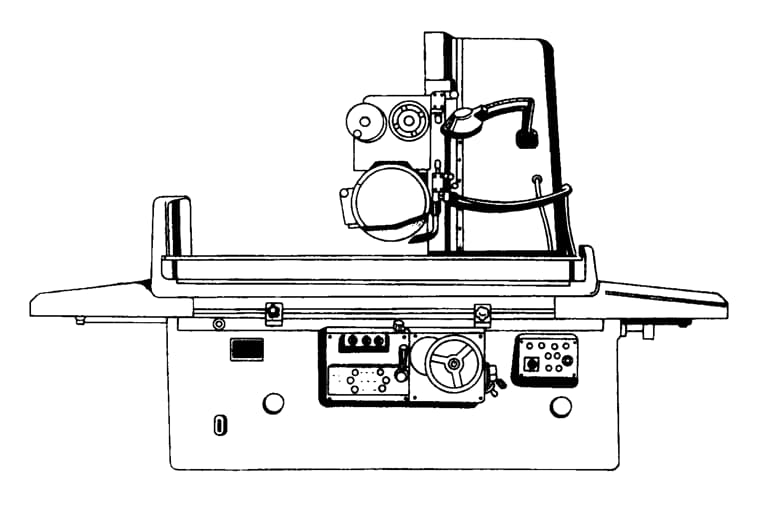
Features of the Horizontal Spindle Flat Grinding Machine:
1) The rotational movement of the grinding wheel is the main motion. The reciprocating linear motion of the worktable driven by the workpiece is the longitudinal feed motion. The transverse movement of the grinding wheel along the slide is the transverse feed motion, and the vertical feed motion is achieved by the combined movement of the grinding wheel frame and the slide along the pillar guide rail.
2) The workpiece is electrically positioned on the worktable, making positioning and clamping very convenient.
3) The longitudinal feed is controlled hydraulically, and the transverse feed can be hydraulically or manually controlled, while the vertical feed is manually controlled, making it easy to operate.
4) It has a wide processing range and high production efficiency, and is suitable for precision machining of flat parts in single-piece or batch production.
4. Vertical Spindle Rotary Table Flat Grinding Machine

Features of a vertical spindle surface grinder:
1) The rotational movement of the grinding wheel around the vertical spindle is the main motion. The rotary table driven by the workpiece is the feed motion (and the rotary table can also move longitudinally along the bed guide rail). The movement of the grinding wheel frame along the column is the vertical feed motion.
2) Due to the large diameter of the grinding wheel, inserts are often used for grinding.
3) It has high production efficiency and is suitable for precision machining of small parts produced in batches or flat surfaces and end faces of large-diameter ring-shaped parts.

